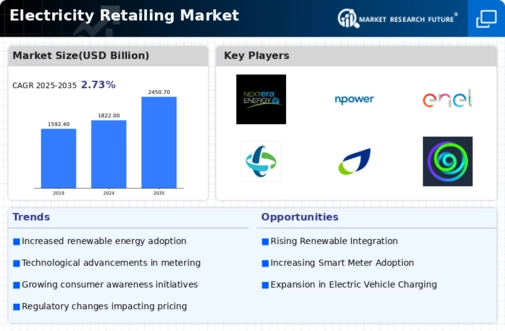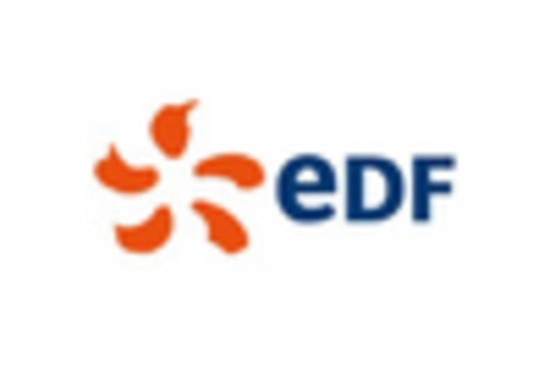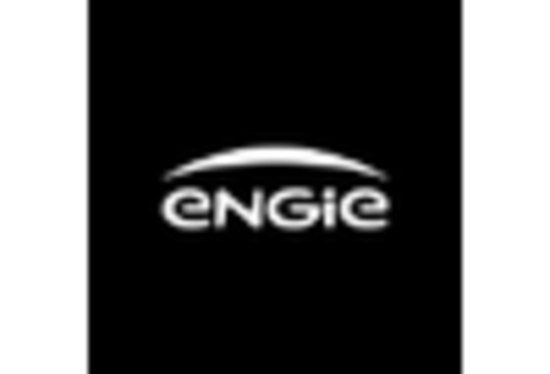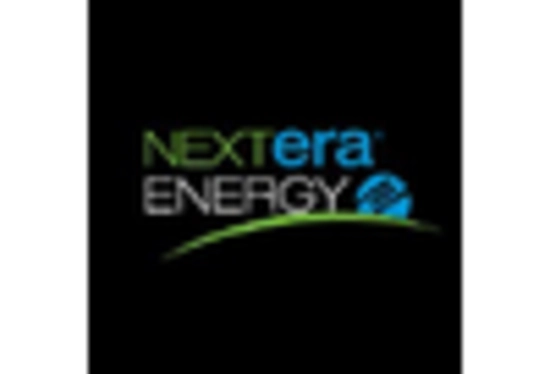Advancements in Smart Meter Technology
The integration of smart meter technology is revolutionizing the Electricity Retailing Market. Smart meters enable real-time monitoring of energy consumption, allowing consumers to make informed decisions regarding their electricity usage. This technology not only enhances customer engagement but also facilitates demand response programs, which can lead to reduced energy costs. As of 2025, it is projected that over 50 percent of households will be equipped with smart meters, significantly impacting the way electricity is consumed and managed. The proliferation of smart meters is likely to drive operational efficiencies for retailers, as they can better predict demand patterns and optimize energy distribution, thus enhancing their competitive edge in the Electricity Retailing Market.
Rising Energy Prices and Cost Management
The Electricity Retailing Market is currently facing challenges related to rising energy prices, which are prompting consumers to seek more cost-effective solutions. As energy costs continue to fluctuate, retailers are compelled to develop strategies that mitigate these impacts on their customers. In 2025, it is projected that energy prices may increase by approximately 10 percent, leading to heightened consumer awareness regarding energy efficiency and cost management. This scenario is likely to drive demand for energy-saving products and services, as consumers look for ways to reduce their electricity bills. Consequently, electricity retailers must adapt their offerings to include energy-efficient solutions, thereby enhancing their value proposition within the Electricity Retailing Market.
Regulatory Frameworks Promoting Competition
The Electricity Retailing Market is increasingly influenced by regulatory frameworks that promote competition among electricity providers. Governments are implementing policies aimed at deregulating electricity markets, which encourages new entrants and fosters a competitive landscape. This shift is expected to lead to lower prices and improved service quality for consumers. In 2025, it is anticipated that several regions will have fully competitive retail electricity markets, allowing consumers to choose from a variety of suppliers. Such regulatory changes are likely to stimulate innovation and efficiency within the Electricity Retailing Market, as companies strive to differentiate themselves in a crowded marketplace.
Increasing Demand for Sustainable Energy Solutions
The Electricity Retailing Market is experiencing a notable shift towards sustainable energy solutions. As consumers become more environmentally conscious, the demand for renewable energy sources such as solar and wind power is on the rise. This trend is reflected in the increasing number of households opting for green energy tariffs, which are designed to provide electricity generated from renewable sources. In 2025, it is estimated that approximately 30 percent of residential customers are likely to choose renewable energy options, indicating a significant transformation in consumer preferences. This growing inclination towards sustainability is compelling electricity retailers to adapt their offerings, thereby driving innovation and competition within the Electricity Retailing Market.
Integration of Electric Vehicles into Energy Systems
The growing adoption of electric vehicles (EVs) is poised to have a profound impact on the Electricity Retailing Market. As more consumers transition to EVs, the demand for charging infrastructure and related services is expected to surge. By 2025, it is estimated that the number of electric vehicles on the road could reach 30 million, creating new opportunities for electricity retailers to expand their service offerings. This integration of EVs into energy systems may lead to innovative pricing models and demand response strategies, as retailers seek to manage the increased load on the grid. The Electricity Retailing Market must adapt to these changes, ensuring that they are equipped to meet the evolving needs of consumers in an increasingly electrified transportation landscape.

















Leave a Comment